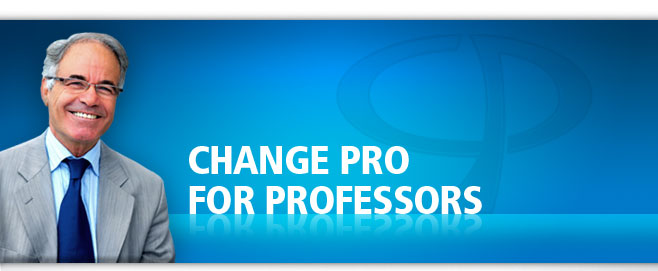A case for the Change Pro Simulation?
The ability to lead change is important:
over the last few years the pace of change has been intensifying,
managers are expected to bring about ever more improvement and change in ever less time using ever less resources,
the ability to lead and implement change effectively has become a critical skill.
Leading vs Implementing Change
Leading change differs from implementing it in that "leading change" includes more degrees of freedom for the change agent than "implementing change". (In the latter case, the nature of the change and many of its parameters will have been set by someone else (typically someone higher-up in the organization), and the role of the change agent is to deploy this change).
Many books and articles have been written on "leading change", thus providing a rich basis for an instructor to lecture on the subject. Instructors who wish to approach the subject via a case discussion can also choose from many excellent cases documenting successful and unsuccessful examples of leaders attempting to introduce change.
Teaching challenges
Teaching "leading and implementing change" should hence be relatively easy. In practice, however, those who have tried know that it is not.
The major challenge comes from the fact that many MBA and EMBA students (and an even greater proportion of managers participating in executive education programs) believe they are already experts at this.
This is particularly true for the "implementing change" component. All of them have been on the receiving end of change, many of them have had to manage the implementation or deployment of some changes, "they know how to do this" and hence have relatively limited dissatisfaction with the status quo.
New tools needed
Many of the lessons we have to impart regarding how to go about "implementing change" are reasonably commonsensical.
In addition, as "management wisdom" is incredibly available to anyone willing to read or even listen, most managers have read, heard or thought about most of these lessons at some point.
But that does not mean they are systematically putting these points into practice. To use Pfeffer and Sutton's expression, implementing change is an area where the "knowing-doing gap" is highest.
Professors need pedagogical tools:
helping them bridge the "knowing-doing gap",
helping students/managers realize their deficiencies and neutralizing their prejudices to have them seek to learn again,
helping students/managers learn in a way that will lead to more implementation of the acquired knowledge.
and this is precisely the reason why the Change Pro Simulation was created.
For more information or a personal license to explore the Change Pro Simulation click here or write to us at contact@learningways.com

